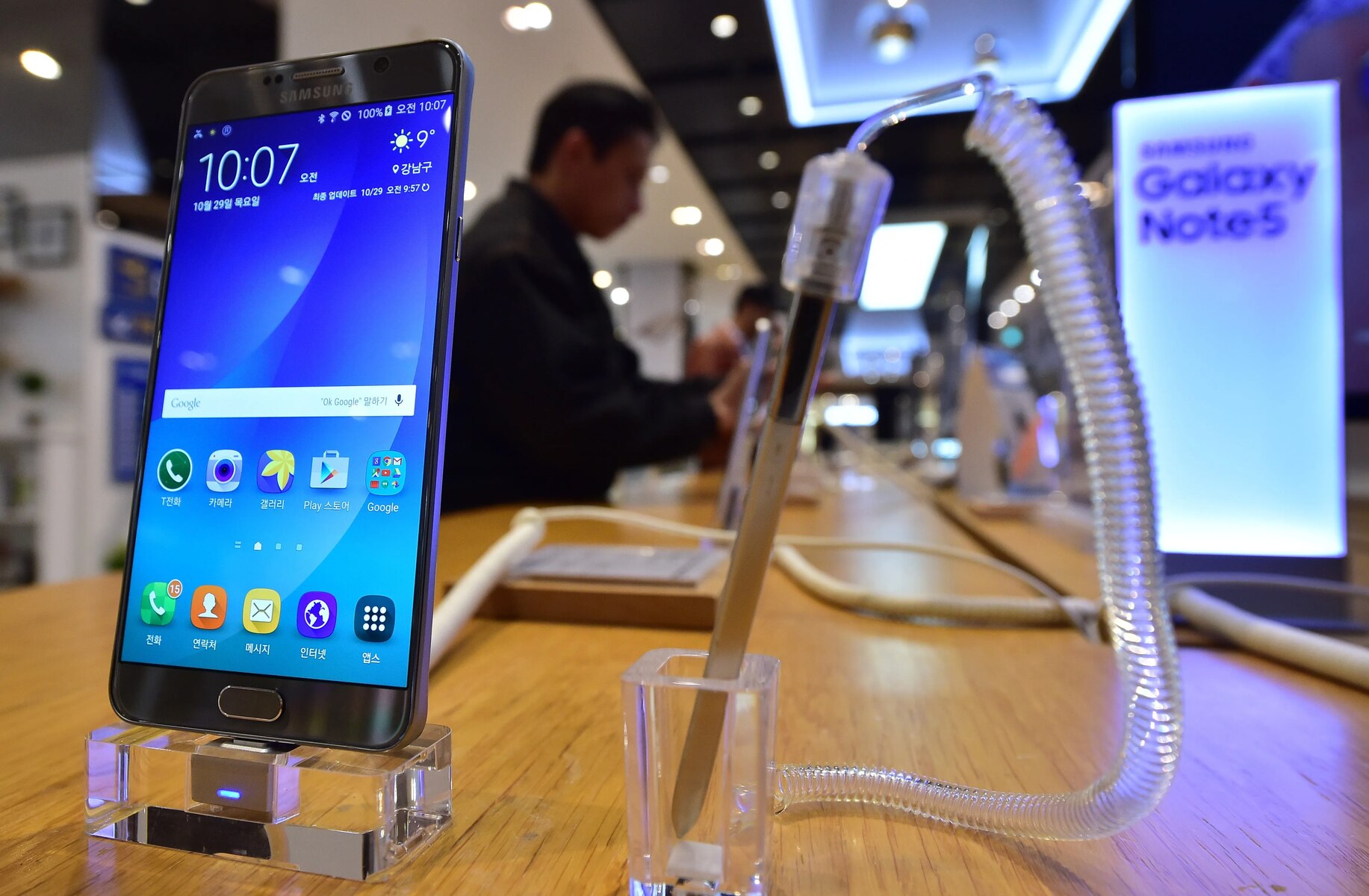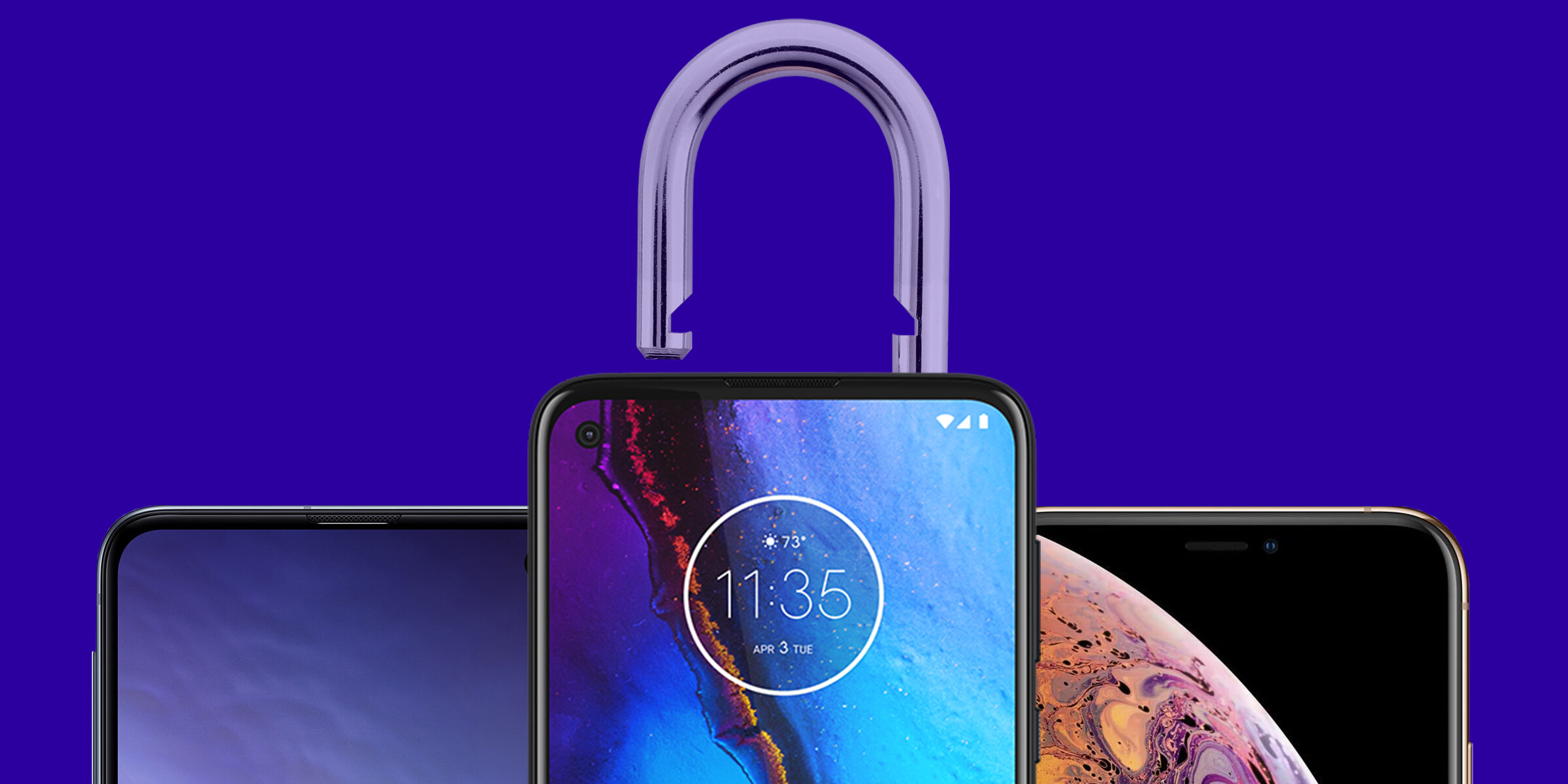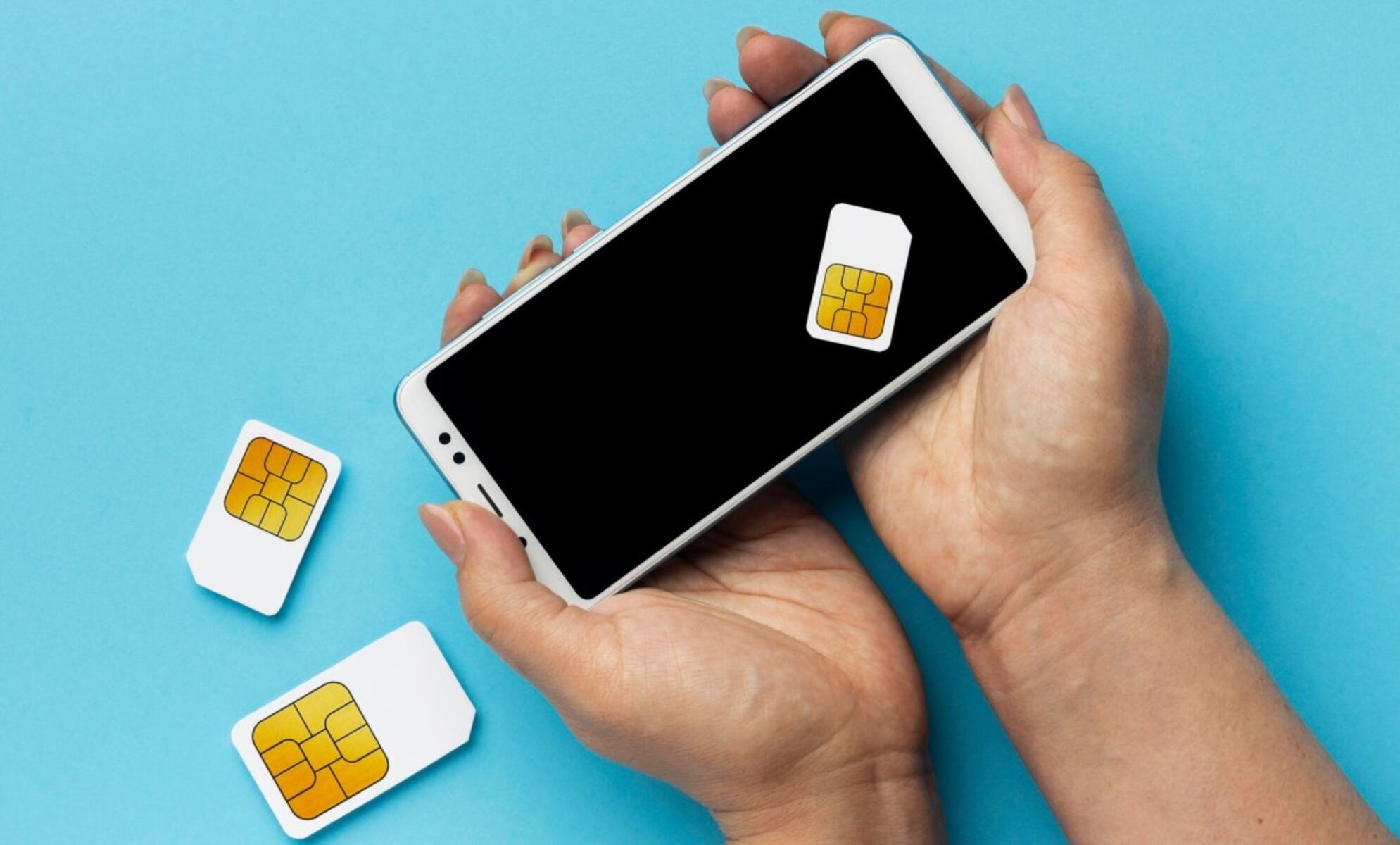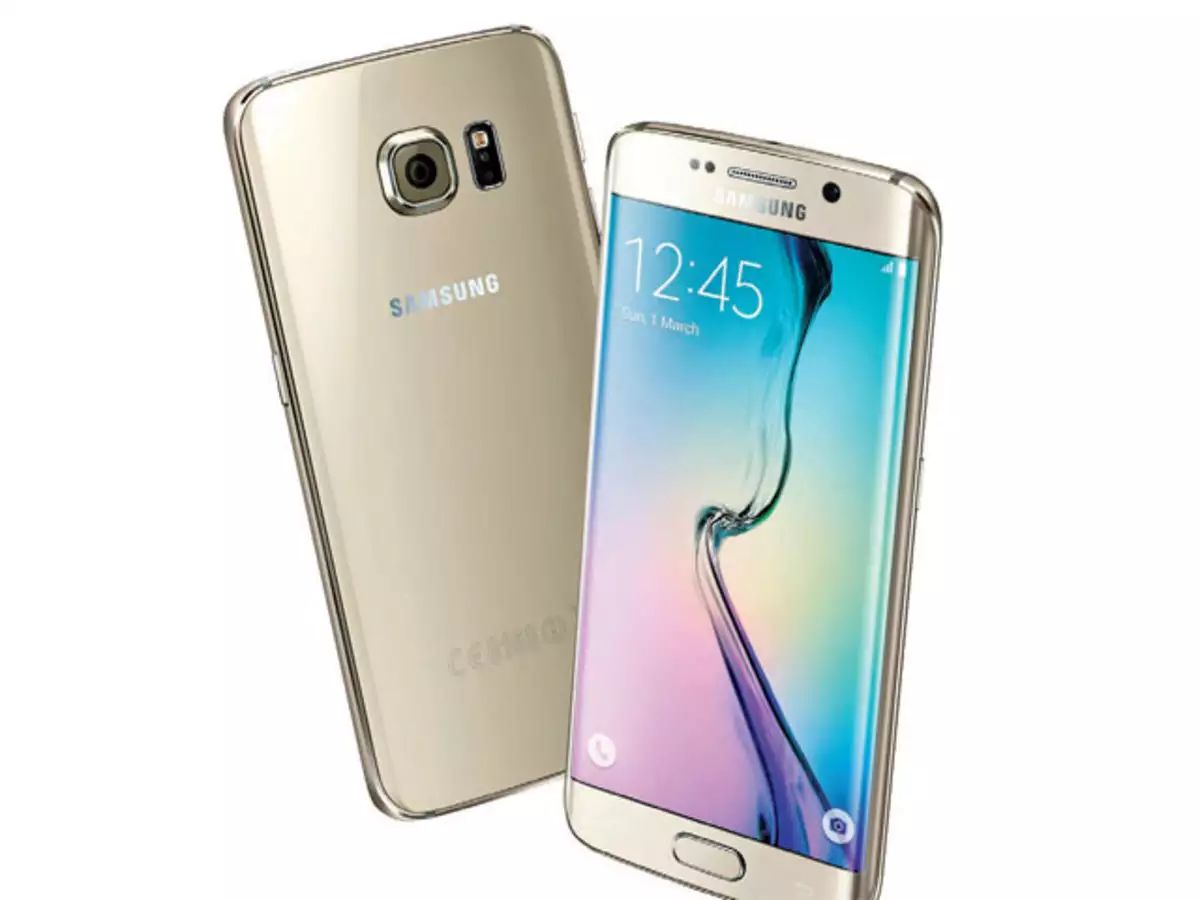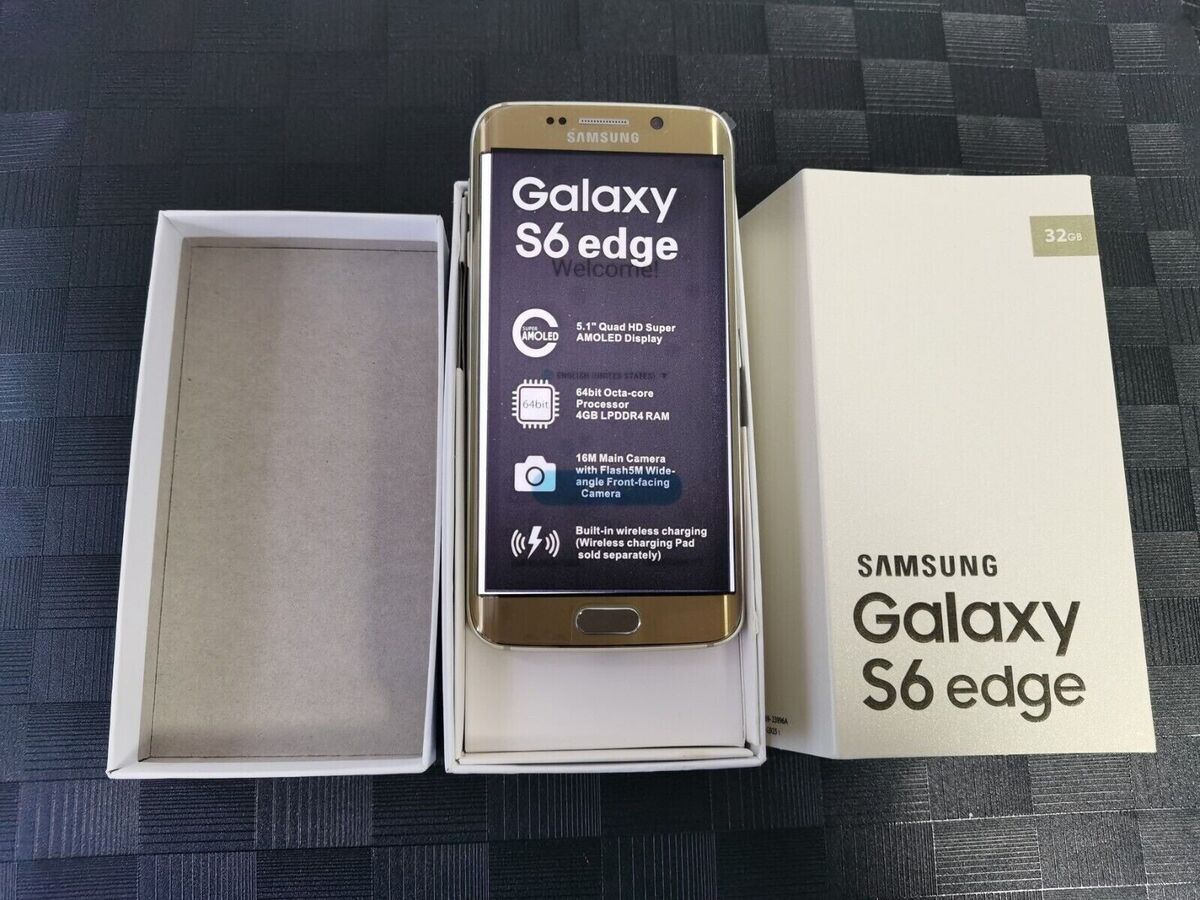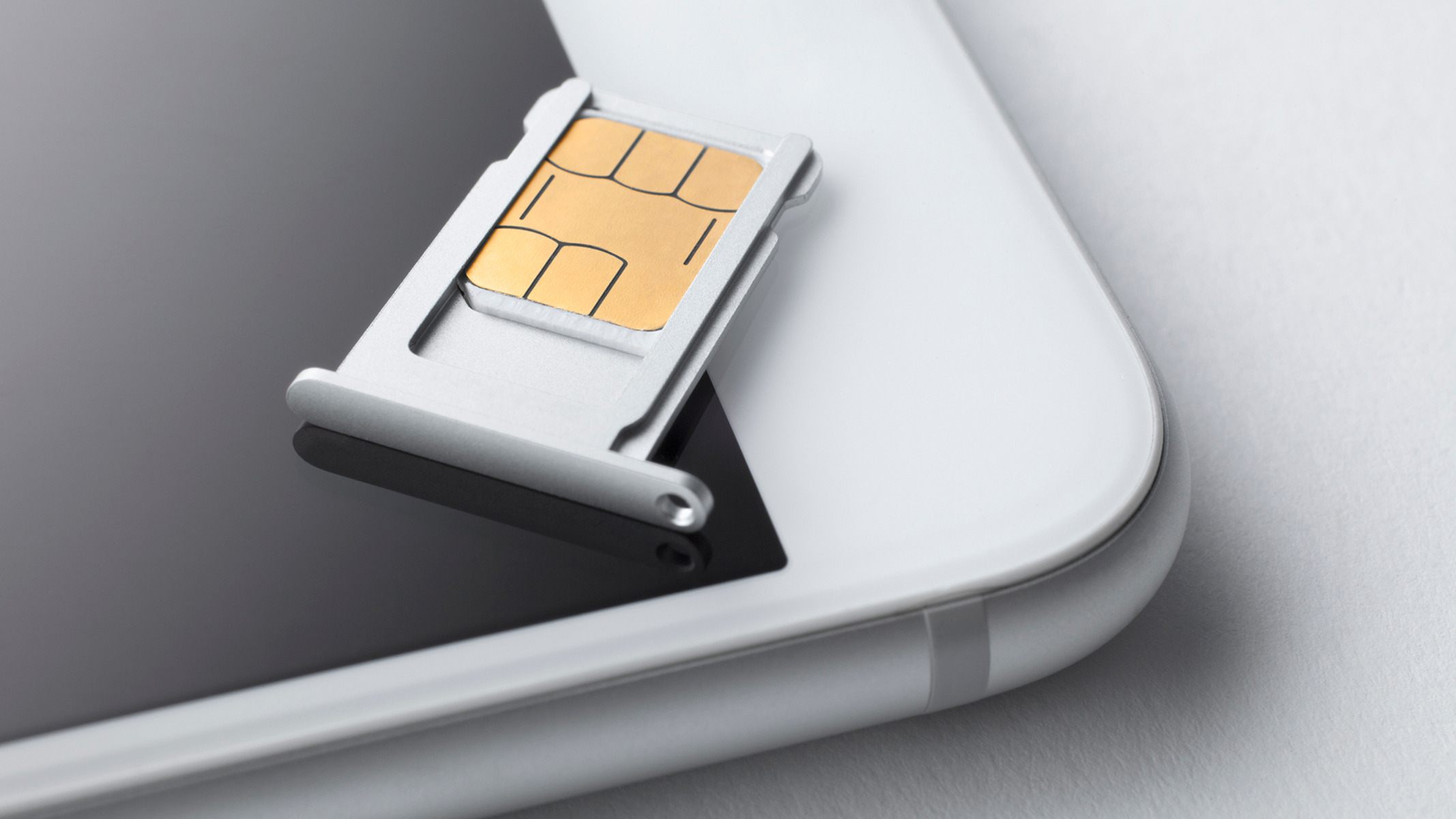Introduction
Are you in the market for a new smartphone but don’t want to be tied down by a contract? Purchasing a smartphone without a contract can offer you more freedom and flexibility in choosing your network provider, avoiding long-term commitments, and potentially saving you money in the long run. However, navigating the process of buying a smartphone without a contract can be overwhelming, especially with the multitude of options available.
In this guide, we will walk you through the steps to successfully purchase a smartphone without a contract, from researching and planning to making the final purchase. By following these steps, you will be well-equipped to find the perfect device that meets your needs and preferences without the limitations of a contract.
It’s important to note that buying a smartphone without a contract does not mean you have to sacrifice quality or features. You can still find top-of-the-line models with all the latest technology and innovative features. So, whether you’re an avid gamer, a photography enthusiast, or a power user who needs a reliable device for work, there’s a smartphone out there that’s perfect for you.
Before diving into the process of buying a smartphone without a contract, it’s essential to set your expectations and understand that it requires a bit of research and planning. This extra effort will ensure that you make an informed decision and get the most value for your money.
Research and Planning
Before making any purchase, it’s crucial to invest time in research and planning to ensure you make the right decision. Here are some key steps to follow:
Determine your budget: Start by figuring out how much you’re willing to spend on a smartphone. Setting a budget will help narrow down your options and prevent overspending.
Determine your needs and priorities: Consider your usage patterns and the features that matter most to you. Are you a heavy gamer who needs a phone with a powerful processor and ample RAM? Or are you a photography enthusiast who requires a stellar camera? Knowing your priorities will guide your search.
Research different smartphone brands and models: Familiarize yourself with the leading smartphone brands and their offerings. Look for models that align with your needs and budget. Read reviews and comparisons to get an idea of user experiences and overall performance.
Compare prices and features: Don’t settle for the first smartphone that catches your eye. Compare prices and features across different brands and models. Look for promotions or discounts that may be available.
Consider buying used or refurbished smartphones: If budget is a concern, consider buying a used or refurbished smartphone. These devices can offer significant savings, but ensure you purchase from a reputable seller and thoroughly check the condition of the device.
Assess network compatibility: Check the compatibility of the smartphone with your desired network provider. Ensure that the phone supports the necessary bands and frequencies for optimal network performance.
Find reputable sellers: Look for trustworthy sellers or retailers who offer reliable products and good customer service. Check online reviews and ratings to gauge their reputation.
By conducting thorough research and planning, you can enter the smartphone market well-informed and ready to make a smart purchase decision. Take the time to gather all the necessary information before moving on to the next steps.
Determine your budget
Before delving into the exciting world of smartphone shopping, it’s essential to determine your budget. Knowing how much you’re willing to spend will help streamline your options and prevent overspending. Here are some tips to guide you:
Evaluate your financial situation: Take a close look at your income, expenses, and savings to determine a realistic budget for your smartphone purchase. Consider your monthly budget for telecommunications and any other expenses related to your smartphone usage.
Consider the long-term costs: It’s not just the upfront cost of the smartphone you need to account for. Remember to factor in the cost of accessories, such as protective cases or screen protectors, as well as any additional charges for data plans or device insurance.
Think about the lifespan of the device: How long do you expect to use the smartphone before upgrading? If you prefer keeping up with the latest technology, you may want to allocate a larger budget to purchase a high-end smartphone that will last longer.
Weigh your priorities: Reflect on what features and specifications are most important to you. If you’re more concerned about camera quality or battery life, you may want to allocate more funds to find a device that excels in those areas.
Consider affordability options: If your budget is limited, don’t worry. There are many smartphones available at various price points, including budget-friendly options that still offer impressive features. Don’t underestimate the value you can get from mid-range devices.
Be flexible: Keep in mind that prices for smartphones may fluctuate. It’s a good idea to have a range in mind rather than a fixed budget. This flexibility will allow you to adapt to any price changes or promotions that arise during your search.
Taking the time to determine your budget will make the entire smartphone buying process much smoother. It will help you focus on devices that align with your financial capabilities without sacrificing the features you deem important. Remember to strike a balance between your desired smartphone and what you can comfortably afford.
Determine your needs and priorities
When buying a smartphone, it’s crucial to assess your needs and priorities to ensure that the device meets your specific requirements. By considering how you plan to use your smartphone and what features are most important to you, you can make a more informed decision. Here are some factors to consider:
Usage patterns: Think about how you typically use your smartphone. Are you a heavy gamer, a social media enthusiast, or someone who relies heavily on productivity apps for work? Understanding your usage patterns will help you determine the processing power, memory, and battery life you require.
Screen size and resolution: Consider the size and resolution of the smartphone’s display. If you watch a lot of videos or enjoy gaming, a larger screen size with high resolution may be more appealing. However, if you prefer a compact device that fits comfortably in your hand or pocket, you may opt for a smaller screen size.
Camera quality: If you enjoy capturing precious moments, evaluate the camera capabilities of the smartphone. Look for features like higher megapixel counts, optical image stabilization, aperture size, and advanced camera modes. Consider your photography needs and whether you prioritize high-quality photos and videos.
Operating system: Decide whether you prefer iOS, Android, or another operating system based on your personal preferences and familiarity. Each operating system has its unique features, app availability, and user interface, so choose one that suits your needs and preferences.
Storage capacity: Assess your storage needs based on the number of apps, photos, videos, and files you plan to store on your smartphone. If you rely heavily on cloud services or prefer to stream content, you may not need as much internal storage. However, if you prefer to have everything stored on your device, consider a higher storage capacity or devices with expandable storage options.
Battery life: Evaluate the battery life of the smartphone, especially if you often use your device on the go or in situations where charging may not be readily available. Look for devices with larger battery capacities or those that have fast-charging capabilities.
Connectivity and network compatibility: Consider whether you need specific connectivity options, such as 5G or NFC capabilities. Also, ensure that the smartphone is compatible with the network provider you intend to use. Check for compatibility with bands and frequencies to ensure optimal network performance.
By determining your needs and priorities, you can narrow down your options and focus on smartphones that align with your preferences. This will help ensure that the device you choose provides the best user experience and meets your specific requirements.
Research different smartphone brands and models
When buying a smartphone, it’s important to research and familiarize yourself with different brands and models available in the market. Each brand offers a range of devices with unique features, specifications, and design aesthetics. Here are some steps to follow when researching:
Read reviews and comparisons: Look for in-depth reviews from reputable tech websites and online forums. These reviews can provide insights into the performance, camera quality, battery life, and overall user experience of different smartphone models. Additionally, comparisons between similar devices can help you narrow down your options.
Consider brand reputation: Take into account the reputation and track record of different smartphone manufacturers. Some brands have a long-standing reputation for producing high-quality devices, while others are known for their innovative features or affordability.
Examine the ecosystem: Consider the ecosystem that the smartphone operates within. For example, if you already own other devices from a specific brand, such as a smartwatch or tablet, it may be beneficial to choose a smartphone that integrates well within that ecosystem. This can enhance the overall user experience and provide seamless connectivity between devices.
Look for unique features: Differentiate between brands by identifying unique features that they offer. These features can be hardware-related, such as advanced camera capabilities or water resistance, or software-related, such as a customized user interface or exclusive apps.
Consider software updates: Look into the track record of each brand in terms of software updates. Check how frequently they release updates and how long they provide support for older devices. Buying a smartphone from a brand known for timely and long-term software updates can ensure that you have access to the latest features and security patches.
Think about resale value: Although it may not be the primary consideration, considering the resale value can be helpful if you plan to upgrade your smartphone in the future. Some brands hold their value better than others, making it easier to sell or trade-in your device.
By conducting thorough research on different smartphone brands and models, you can make an informed decision based on your requirements, preferences, and budget. Remember that what works for one person may not work for another, so ensure that you choose a device that aligns with your specific needs.
Compare prices and features
When buying a smartphone, comparing prices and features across different brands and models is crucial to ensure you get the best value for your money. By doing so, you can find a device that meets your needs while staying within your budget. Here are some steps to help you compare:
Make a list of desired features: Start by listing the features that are important to you. Consider aspects like camera quality, display resolution, processor power, memory capacity, and any specific features or functionalities that you require.
Visit multiple retailers and websites: Explore various retailers and their websites to compare prices and availability. Keep in mind that prices can vary between online and physical stores, so it’s worth checking both options.
Take advantage of price comparison websites and apps: Utilize price comparison websites or apps that aggregate prices from multiple retailers. These tools can save you time and effort by showing you the best deals available.
Consider package deals or promotions: Retailers often offer package deals or promotions that include additional accessories, such as cases or headphones, or discounts on related products. Take these into account when comparing prices and features, as they can add value to your purchase.
Read customer reviews: Look for customer reviews or ratings for the smartphones you’re considering. Pay attention to any recurring issues or positive experiences mentioned by users. This real-world feedback can provide valuable insights into the device’s performance and user satisfaction.
Keep in mind the total cost of ownership: Consider the long-term cost of owning the smartphone, including any additional expenses such as extended warranties, insurance, or repair costs. These factors should be considered alongside the initial purchase price.
Consider the brand’s reputation: Evaluate the reputation of the brand you’re considering, not just in terms of price but also in terms of quality, reliability, and after-sales support. A slightly higher price from a reputable brand may be worth it in the long run.
Weigh the value of each feature: Assess how important each feature is to you and consider if it justifies the cost. Determine which features are essential, which are nice-to-have, and which you can do without. This will help you prioritize and make informed decisions.
By comparing prices and features, you can identify the best smartphone that offers the desired features at a competitive price. Remember to strike a balance between your budget and the features you prioritize to make the optimal choice for your needs.
Consider buying used or refurbished smartphones
When searching for a smartphone without a contract, don’t overlook the option of buying used or refurbished devices. These can offer significant savings without necessarily compromising on quality. Here’s why you should consider this option:
Cost savings: One of the main advantages of buying used or refurbished smartphones is the cost savings. These devices are typically sold at a lower price compared to brand new ones, making them a more budget-friendly option.
Good condition: Many used or refurbished smartphones are in excellent condition. Sellers often thoroughly inspect and, if necessary, repair or replace any faulty or damaged components. You can find devices that look and function like new, but at a fraction of the original cost.
Warranty and guarantees: Reputable sellers of used or refurbished smartphones often provide warranties or guarantees to ensure buyer satisfaction. This gives you peace of mind knowing that you can seek assistance or a replacement if any issues arise shortly after your purchase.
Environmental benefits: Buying used or refurbished smartphones contributes to environmental sustainability. By extending the lifespan of these devices, you help reduce electronic waste and the need for the production of new smartphones.
Access to older models: If you have a specific model in mind that is no longer available as a new device, buying used or refurbished is an excellent way to get your hands on it. This is particularly useful if you prefer specific features or design elements that newer models may not have.
Refurbished directly from the manufacturer: Some manufacturers offer certified refurbished devices. These have undergone rigorous testing and repairs to ensure they meet the same standards as new smartphones. Purchasing refurbished devices directly from the manufacturer can provide an extra level of assurance in terms of quality and reliability.
Research and choose reputable sellers: When buying used or refurbished smartphones, it’s important to research and choose reputable sellers. Read reviews, check their return policy, and inquire about their refurbishing process. This will help ensure a positive buying experience and a reliable device.
Buying used or refurbished smartphones can be a smart choice, allowing you to save money while still getting a high-quality device. Just make sure to do your due diligence, choose a trustworthy seller, and carefully evaluate the condition and warranty terms before making your purchase.
Assess network compatibility
When purchasing a smartphone without a contract, it’s essential to assess its compatibility with your desired network provider. Ensuring that the device supports the necessary bands and frequencies will guarantee optimal network performance. Here’s what you need to consider:
Research network compatibility: Familiarize yourself with the network provider’s coverage map, available networks (e.g., 4G, 5G), and the bands and frequencies they operate on. This information will help you understand the network requirements for your smartphone.
Check the smartphone’s specifications: Look for the specifications of the smartphone, specifically the supported bands and frequencies. These details are usually listed in the product description or on the manufacturer’s website. Compare this information with the network requirements of your desired provider to ensure compatibility.
Multi-band support: Consider smartphones that support multiple bands, as this increases the chances of compatibility with various network providers. Multi-band devices can switch between different frequencies, allowing you to use the smartphone on different networks if you decide to switch providers in the future.
Regional compatibility: If you plan to travel internationally or frequently change your location, make sure the smartphone supports the necessary bands and frequencies in those regions. This will ensure that you have reliable network coverage and avoid any compatibility issues when using local SIM cards abroad.
Check with the network provider: If you are unsure about the compatibility of a specific smartphone, reach out to your network provider’s customer service. They can provide further guidance and confirm if the smartphone is compatible with their network.
Consider unlocked smartphones: Unlocked smartphones offer more flexibility as they are not tied to any specific network provider. These devices can be used with various carriers as long as they are compatible with the required bands and frequencies. Unlocked smartphones also give you the freedom to switch providers or use SIM cards when traveling.
Verify LTE connectivity: If you rely heavily on mobile data, ensure that the smartphone supports LTE (Long-Term Evolution) connectivity. LTE offers faster data speeds and better network performance, enhancing your overall mobile experience.
By assessing network compatibility, you can ensure that your smartphone will work seamlessly with your preferred network provider. It’s important to verify these details before making a purchase to avoid any connectivity issues or limitations with your smartphone’s network capabilities.
Find reputable sellers
When purchasing a smartphone without a contract, it’s crucial to find reputable sellers to ensure a smooth and trustworthy buying experience. Here are some steps to help you find reliable sellers:
Research online sellers: Look for well-established online sellers with positive reviews and ratings. Read customer feedback to gauge the reputation and reliability of the seller. Popular e-commerce platforms often have buyer protection policies that can provide an extra layer of security.
Check manufacturer’s authorized resellers: Visit the official website of the smartphone manufacturer to find a list of authorized resellers. Buying from authorized resellers ensures that you receive genuine products and have access to customer support and warranty services if needed.
Leverage brick-and-mortar stores: Consider purchasing from reputable brick-and-mortar stores that specialize in electronics or have dedicated smartphone sections. These stores often have knowledgeable staff who can provide guidance and support during the purchasing process.
Consider user forums and communities: Participate in online forums or communities where smartphone enthusiasts discuss their buying experiences. This can provide valuable insights into reliable sellers and tips for finding the best deals.
Research return policies and warranties: Look for sellers that offer generous return policies and warranties. It’s important to have the option of returning or exchanging the device if there are any issues. Carefully review the terms and conditions to ensure you understand your rights as a buyer.
Consider certified refurbished sellers: If you are interested in buying a refurbished device, seek out certified refurbished sellers. These sellers adhere to specific standards and provide warranties or guarantees for their products, giving you peace of mind that the device has undergone rigorous testing.
Validate seller credentials: Before making a purchase, verify the seller’s credentials, such as their business registration, contact information, and any certifications they claim to have. This step can help identify legitimate sellers and avoid any potential scams or counterfeit products.
Pay attention to customer service: Good customer service is crucial when purchasing a smartphone. Look for sellers who are responsive and provide clear communication throughout the buying process. Prompt and helpful customer service can make a significant difference if you encounter any issues with your purchase.
By finding reputable sellers, you can minimize the risk and ensure a positive buying experience when purchasing a smartphone without a contract. Take the time to research and choose sellers with a proven track record of reliability, good customer service, and genuine products.
Purchasing the Smartphone
Once you have completed your research and chosen the smartphone that best meets your needs, it’s time to make the actual purchase. Here are some steps to guide you through the purchasing process:
Choose where to buy the smartphone: Determine the best platform or store to purchase the smartphone from based on your research. Consider factors such as price, reputation of the seller, return policies, and convenient payment options.
Decide on the payment method: Consider the payment options available and choose the method that suits your preferences. Popular payment methods include credit/debit cards, PayPal, or alternative payment services. Ensure that the chosen method is secure and that your personal and financial information is protected.
Select additional accessories and warranties: Decide if you need any additional accessories, such as headphones, a protective case, or a screen protector. Some sellers may provide bundle deals or offer these accessories as add-ons. Additionally, consider whether you want to purchase an extended warranty to provide additional coverage for your device.
Finalize the purchase: Double-check the details of your purchase, such as the smartphone model, color, and any selected accessories or warranties, before proceeding to the checkout. Ensure the total cost, including taxes and shipping fees, is transparent and accurate. Review the seller’s terms and conditions, including their return and refund policies.
Complete the transaction securely: When entering your personal and payment details, make sure you’re on a secure and encrypted webpage. Look for indications such as the lock icon in the browser address bar or “https://” in the URL. Protect your information by avoiding public Wi-Fi networks and using a trusted network connection when making the purchase.
Keep records of the transaction: After completing the purchase, save and print the confirmation email or receipt. These documents will serve as proof of purchase and can be useful in case of any issues or warranty claims.
Delivery and receipt of the smartphone: Track the delivery of your smartphone and ensure someone is available to receive it. Inspect the package for any signs of damage during transit. When receiving the smartphone, check that it matches your order, including the model, color, and accessories. Test the device to ensure it functions correctly.
By following these steps, you can confidently navigate the process of purchasing a smartphone without a contract. Stay vigilant throughout the transaction and maintain clear communication with the seller to ensure a smooth and satisfactory buying experience.
Choose where to buy the smartphone
When it comes to purchasing a smartphone without a contract, choosing the right platform or store is crucial to ensure a positive buying experience. Here are some factors to consider when deciding where to buy your smartphone:
Reputation and reliability: Look for reputable sellers or platforms with a proven track record of reliability. Check customer reviews and ratings to get an idea of other buyers’ experiences. A seller with a positive reputation is more likely to provide good customer service and sell genuine products.
Price and affordability: Compare prices across different platforms and stores to ensure you’re getting the best deal. However, keep in mind that extremely low prices may be a sign of counterfeit or refurbished devices. Consider the balance between price and reputation when making your decision.
Return and refund policies: Review the seller’s return and refund policies to ensure they align with your expectations. A flexible return policy can give you peace of mind if the smartphone doesn’t meet your expectations or if there are any issues with the device.
Authorized retailers: Consider purchasing from authorized retailers, particularly if you’re buying a new device. Authorized retailers are more likely to sell genuine products and provide customer support if you encounter any problems with your purchase.
Physical stores: Explore brick-and-mortar stores that specialize in electronics or have dedicated smartphone sections. These stores often have knowledgeable staff who can assist you in person and provide hands-on experience with the devices before making a purchase.
Online marketplaces: Online marketplaces can offer a wide selection of smartphones from various sellers. Look for reputable sellers with high ratings and positive reviews. Be cautious of sellers with limited ratings or suspiciously low prices.
Direct from manufacturer: Some smartphone manufacturers have their own online stores where you can purchase their devices directly. Buying from the manufacturer can provide peace of mind in terms of authenticity and support.
Consider local retailers: Don’t overlook local retailers and small businesses. They may offer competitive prices and personalized customer service. Supporting local businesses can also contribute to the local economy.
Convenience and shipping: Consider the convenience of the purchasing process and the shipping options available. Look for sellers that offer fast and reliable shipping methods, particularly if you need the smartphone by a specific date or if you prefer expedited delivery options.
By considering these factors and comparing your options, you can choose a reputable platform or store to buy your smartphone without a contract. Take the time to research and ensure that the seller aligns with your requirements in terms of price, reliability, and customer service.
Decide on the payment method
When purchasing a smartphone without a contract, deciding on the right payment method is an important step in ensuring a secure and convenient transaction. Here are some factors to consider when choosing your payment method:
Credit/Debit Cards: Using a credit or debit card is a common and convenient payment method when buying a smartphone. It offers buyer protection and the ability to dispute charges if there are any issues with your purchase. Check for secure payment gateways and consider using a card with fraud protection features.
PayPal or Online Payment Services: Consider using popular online payment services like PayPal or other similar platforms. These services provide an extra layer of security by acting as intermediaries between buyers and sellers. They offer protection programs and can facilitate refunds in case of any problems.
Bank Transfers: Some sellers may offer the option of bank transfers. While this method is direct, it’s important to ensure that you’re dealing with a reputable seller and that proper security precautions are in place. Verify the seller’s credentials and ensure that the transfer is made to the correct account.
Mobile Payment Apps: Mobile payment apps, such as Apple Pay or Google Pay, offer convenience and security. These apps use tokenization technology to encrypt payment information, adding an extra layer of protection. Ensure that the seller accepts your preferred mobile payment app before making your purchase.
Gift Cards or Vouchers: Some platforms or sellers may accept gift cards or vouchers as payment. However, be cautious when using this method and verify the legitimacy of the gift card or voucher before making your purchase.
Secure Online Payment: Ensure that the website or platform you’re making the purchase through has secure and encrypted payment processing. Look for indicators such as the lock icon in the browser address bar or “https://” in the URL, indicating a secure connection.
Consider Payment Plans: If you prefer to spread out the cost of your smartphone, inquire about any available payment plans or installment options offered by sellers or financial institutions. Understand the terms and conditions, including any interest or fees associated with the payment plan.
Payment Security: When entering payment information, avoid using public Wi-Fi networks and opt for secure network connections. Protect your personal and financial information by regularly updating your device’s security features and using strong, unique passwords.
Consider your preferences for convenience, security, and buyer protection when deciding on the payment method for your smartphone purchase. By selecting a trusted and secure payment method, you can complete your transaction with confidence and peace of mind.
Select additional accessories and warranties
When purchasing a smartphone without a contract, you have the opportunity to select additional accessories and warranties to enhance your overall experience and protect your investment. Here are some factors to consider when choosing accessories and warranties:
Protective Cases: Investing in a protective case can shield your smartphone from scratches, drops, and other accidents. Look for cases that provide a good balance between style and protection. Consider the material, durability, and functionality of the case, such as easy access to ports and buttons.
Screen Protectors: Screen protectors add an extra layer of defense against scratches and cracks. Choose from tempered glass protectors for maximum protection or film protectors for a smoother touch experience. Ensure that the screen protector is compatible with the specific smartphone model.
Chargers and Cables: While most smartphones come with chargers and cables, you may want to consider purchasing additional ones for convenience or as backups. Look for reliable, certified chargers and cables to avoid compatibility or safety issues.
Headphones or Earphones: If you enjoy listening to music, podcasts, or videos on your smartphone, investing in a good pair of headphones or earphones can significantly enhance your audio experience. Consider factors like sound quality, comfort, and convenience features such as noise cancellation or wireless connectivity.
Screen Cleaning Kits: Keep your smartphone’s display pristine by purchasing a screen cleaning kit. These kits usually include a microfiber cloth and a cleaning solution specifically designed for electronic screens. Regular cleaning helps maintain the clarity and responsiveness of your smartphone’s display.
Extended Warranties: Consider purchasing an extended warranty to provide additional coverage for your smartphone. Extended warranties can offer peace of mind by protecting against potential defects and malfunctions that may not be covered by the standard manufacturer’s warranty. Review the terms and conditions, including coverage duration and what is included in the warranty.
Insurance Plans: Some retailers or carriers offer insurance plans that cover accidental damage, theft, or loss of your smartphone. Assess the cost and coverage offered by these plans to determine if it aligns with your needs and the value of your device.
Compatibility and Brand: Ensure that the accessories you choose are compatible with your smartphone model. Some accessories may be brand-specific or designed for particular models, so check for compatibility before making your purchase.
Cost versus Value: Consider the cost versus the value of the additional accessories and warranties. Evaluate their importance to you and weigh that against the expense. Decide which accessories and warranties are necessary for your usage, and prioritize those that provide the most value.
By selecting the right accessories and warranties, you can protect your smartphone and enhance your overall user experience. Consider your needs, preferences, and budget to make informed choices that align with your usage habits and ensure the longevity of your device.
Finalize the purchase
After carefully considering all the options and making your selection, it’s time to finalize the purchase of your smartphone. This step is crucial to ensure a smooth and satisfactory buying experience. Here’s what you need to do:
Double-check the details: Review the details of your purchase, including the smartphone model, color, storage capacity, and any selected accessories or warranties. Ensure that everything is accurate and as you intended.
Verify the total cost: Take a moment to confirm the total cost of the purchase, including the smartphone, taxes, shipping fees, and any additional charges. Ensure that all costs are transparent, and there are no hidden fees.
Confirm the seller’s policies: Carefully review the seller’s terms and conditions, including their return policy, refund policy, and any warranty or guarantee information. Make sure you understand their policies and are comfortable with the terms.
Proceed to checkout: Once you’re satisfied with the details and policies, proceed to the checkout page to initiate the payment process. Follow the provided instructions and enter your payment and shipping information accurately.
Ensure secure online payment: When entering your payment information, ensure that you’re on a secure and encrypted webpage. Look for indications such as the lock icon in the browser address bar or “https://” in the URL. Protect your information by avoiding public Wi-Fi networks and using a trusted network connection.
Keep a record of the transaction: Save and print the confirmation email or receipt that you receive after completing the purchase. These documents serve as proof of your purchase, contain important information like order numbers, and can be useful for warranty claims or troubleshooting.
Track the shipment: After finalizing the purchase, keep track of the shipment. Some sellers provide a tracking number that allows you to monitor the progress of your package. Stay updated on the estimated delivery date and make sure you or someone else is available to receive the smartphone.
Inspect the package upon delivery: When the smartphone arrives, carefully inspect the package for any signs of damage during transit. If there are any visible signs of damage or if the package looks suspicious, document it and contact the seller immediately.
Test the smartphone: Upon receiving the smartphone, test it to ensure that it matches your order and functions correctly. Power it on, navigate through the menus, check the basic functionalities, and test any specific features that are important to you. If there are any issues, contact the seller promptly.
Finalizing the purchase requires attention to detail and careful consideration to ensure a smooth and satisfactory buying experience. By following these steps, you can confidently complete the transaction and eagerly await the arrival of your new smartphone.
Conclusion
Buying a smartphone without a contract can be an exciting and empowering experience. By following the steps outlined in this guide, you can navigate the process with confidence and make an informed decision that meets your needs and preferences.
From determining your budget and assessing your needs to researching different brands and models, comparing prices and features, and finding reputable sellers, each step is essential in ensuring a successful smartphone purchase.
Deciding where to buy your smartphone and choosing the right payment method are crucial considerations. By selecting reputable sellers and secure payment options, you can protect yourself from scams and have peace of mind throughout the purchasing process.
Once you have finalized your purchase, consider additional accessories and warranties that can enhance your smartphone experience and protect your investment. It’s important to weigh the usefulness and value of each accessory or warranty against your budget to make the best choices for your individual needs.
Remember to thoroughly inspect and test the smartphone upon delivery to ensure it matches your order and functions correctly. Following these steps will help ensure a smooth buying process and provide you with a smartphone that meets your expectations.
Buying a smartphone without a contract provides you with the freedom to choose your network provider, avoid long-term commitments, and potentially save money. With the right research, planning, and careful consideration, you’ll find the perfect smartphone that aligns with your preferences and budget.
Now that you’re equipped with the knowledge and guidance from this guide, go ahead and start your journey to find the ideal smartphone that will meet your communication, productivity, and entertainment needs!







